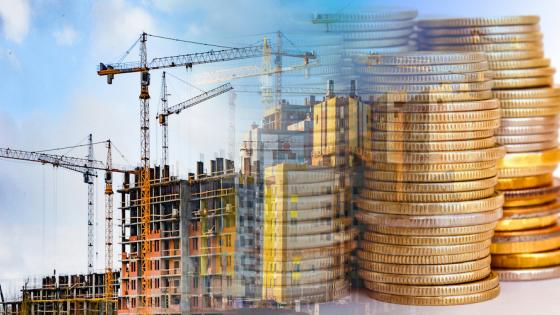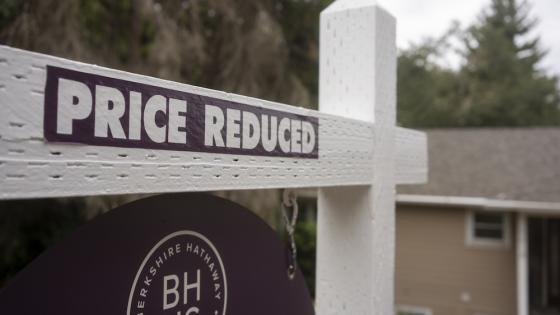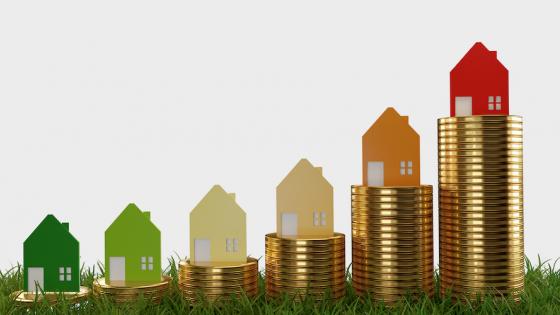The 2008 crisis has cast doubt on the relevance of standard macroeconomic models for explaining economic growth and fluctuations. The standard models focused on exogenous shocks but it was clear that the key source of the 2008 crisis was endogenous, i.e. unsustainable increases in real estate and housing prices, followed by a large crash, with resulting macroeconomic consequences.
Such instabilities have typically been attributed to irrational exuberance or animal spirits (Keynes 1936, Minsky 1986, Akerlof and Shiller 2010, Shiller 2019), but are inexplicable within the standard rational expectations framework that has dominated economics in recent decades. In a recent paper (Hirano and Stiglitz 2022), we show how the complex interactions between land and capital can in fact generate endogenous instabilities and crashes in a dynamic general equilibrium macroeconomic model with rational expectations.
A dynamic model with capital and land
The simplest version of our analysis is set in an overlapping generations model in which individuals live two periods, work the first, saving for their consumption in the second, either in the form of land holdings or capital accumulation. The two-period overlapping generations model is the simplest model with heterogeneous agents. It has a very simple structure to illustrate speculative behaviour of economic agents who enter the market and buy assets, and then exit from the market by selling those assets.
Three key and novel insights underlie the analysis. First, high prices of land crowd out capital accumulation, leading to higher returns to capital, and if land is to get the same return as capital, that necessitates a faster increase in the price of land. Second, there can be multiple momentary equilibria in the economy. If individuals are bearish and expect a low interest rate, they may save a lot, and the high savings lead to a low interest rate. But if individuals are bullish, and expect a high interest rate, then for their retirement, they need to save only a little, and this leads to high interest rates. And third, whether there are multiple momentary equilibria or not depends on the price of land. When land prices are either sufficiently low or high, the only possible rational expectations equilibrium entails either a bearish or a bullish momentary equilibrium, forcing a large, discrete change in expectations, which in turns creates endogenous crashes or booms. For instance, at a high price, if expectations were bullish, the high return to capital would imply a large capital gain to land (if the return to land is to be the same as the return to capital), driving land prices still higher, which in turn strengthens the crowding-out effect on capital accumulation even more, leading to even higher returns to capital and even greater capital gains, setting the economy off on an unsustainable bubble. Thus, at a high enough price, the economy must switch to having bearish expectations. These interactions between capital accumulation and land prices induce what we call ‘phase transitions’, endogenously moving the economy back and forth from situations with unique and multiple momentary equilibria. Thus, once land prices get too high and pass above (or below) a critical threshold, there is a phase transition.
There can, accordingly, be endogenous fluctuations of the economy – with repeated real estate booms and busts, and variability in wages, capital (per capita), and output (per capita) – with the economy fluctuating without any regular periodicity, but within well-defined bounds. The macroeconomy acts like a roller coaster, experiencing endogenous phase transitions repeatedly, oscillating up and down, with internal forces keeping the economy within bounds that can be analytically derived, but also keeping it moving – never settling down, never converging. Our paper thus provides a theoretical foundation for recurrent booms and busts.
The underlying mathematical analysis
The underlying dynamic system involves two state variables and multiple momentary equilibria. As we have noted, a distinctive aspect of our analysis is that whether there are multiple momentary equilibria is itself an endogenous variable, affected by the endogenous state variables, capital stock, and land prices. While the global analysis of such two-dimensional dynamical systems is typically intractable, we are able to provide a complete global analysis for the case of Leontief technology and preferences, showing how the set of rational expectations trajectories is affected by the various technology and preference parameters. We show that the qualitative properties of this model hold more generally.
We provide conditions in which the global macro-dynamics with endogenous macroeconomic instabilities and crashes that we have just described arise and show how changes in parameters affects the range of fluctuations and the relative duration of upswings and downswings. For instance, when the productivity of land is low, after a crash in land prices, the length of time that land prices fall can be long. Or when the productivity of capital is relatively low, boom and bust cycles are characterised by asymmetric shape: the boom is long and accelerates only gradually, while the bust is short and steep.
Government policy
During the land boom, land prices increase at a rate which seems unsustainable. That was the case in 2008. It seemed that the prices were not based on ‘fundamentals’ but on a speculative bubble. But the Chair of the Federal Reserve, supported by other policymakers, claimed that one cannot tell whether there is a bubble until after it breaks. With a bubble, land prices cannot be just ‘explained’ by the returns (land rents) generated; rather, the price today is high simply because speculators believe that they can sell the land at a high price in the future. The question of whether there is a land bubble is important because unsustainable increases in land prices will eventually lead to real estate crashes, typically with severe adverse macroeconomic consequences.
There are several important implications of our model. First, we show that even in a rational expectations model, land prices can increase at a rate that seems unsustainable – along a trajectory that is unsustainable were there no changes in expectations, and this is true whether land yields a return or not (that is, regardless of the fraction of the returns to land that derive from ‘rents’ versus ‘speculation’). Rational expectations booms are inevitably followed, of course, by crashes.
Second, in our model, policymakers do not need to know in advance whether there is a bubble or not: unsustainable increases in land prices crowd out productive capital. Hence government intervention can still be justified.
Moreover, under any equality-preferring social welfare function, there is a loss in social welfare associated with these economic fluctuations. It can be shown that there is government policy with a capital income tax/subsidy and a wage tax/subsidy that can lead to increased macroeconomic stability and social welfare. Indeed, appropriately designed policies (e.g. guaranteeing a certain return on capital) can eliminate the multiplicity of equilibria and ensure stability.
Finally, in the standard model, ascertaining whether a price dynamic is consistent with long-run rational expectations is extraordinarily difficult. Not only do economic agents need to formulate expectations infinitely far into the future1 and figure out the equilibrium path (typically unique, the saddle point path), but so do policymakers wishing to ascertain whether there is a bubble – hence the adage about not being able to ascertain whether there is a bubble until after it breaks. By contrast, in our model, individuals only need to look one period ahead. This is not because they live for only two periods but because everyone knows that everyone else in the economy will surely change their course were they not on a rational expectations equilibrium – and there exists a feasible change in course (moving from bearish to bullish or vice versa), so that there is a feasible rational expectations trajectory. Such a change of course is possible so long as land prices lie between certain bounds. Accordingly, policymakers, too, can ascertain whether a trajectory is consistent with rational expectations simply by looking at whether land prices lie within those bounds.
A different perspective than in the standard macro models
The analysis in our paper reaches other conclusions markedly different from those in the standard macro models. In standard models, the backward induction argument rules out unsustainable paths from the beginning. By contrast, in Hirano and Stiglitz (2022), the macroeconomy can be on an unsustainable path temporarily, but later experiencing an endogenous crash. So long as everyone expects that future generations entering the market will surely change their expectations (from bullish to bearish or vice versa), and accordingly the economy will eventually transition out of the current (unsustainable) trajectory, seemingly unsustainable dynamics can be temporarily consistent with rational expectations.
Showing the much richer set of dynamics, including endogenous fluctuations, consistent with rational expectations is one of the important contributions of the work: The attempt to explain observed fluctuations by independent and identically distributed (i.i.d.) technology shocks has been rightly criticised, particularly in providing interpretations of the most important economic downturns.2
Macro-finance: Better insights into adverse effects of land speculation
The critique of land speculation in Hirano and Stiglitz (2022), that it not only leads to economic instability but also that high land prices crowd out productive capital accumulation, is also markedly different from that in standard macro-finance literature, including Bernanke et al. (1999), Kiyotaki and Moore (1997), and Brunnermeier and Sannikov (2014). That literature focuses on saddle point trajectories, in which asset price increases can be sustainable, with the macroeconomy converging to a steady state. Like other strands of the dynamic stochastic general equilibrium (DSGE) literature, it tries to account for financial crises, including the 2008 crisis, with various types of exogenous shocks. A distinctive aspect of this macro-finance literature is that resource allocation improves as asset prices increase. High asset prices just reflect strength in fundamentals, and by increasing the supply of effective collateral, entrepreneurship is encouraged.3
By contrast, in Hirano and Stiglitz (2022), rising real estate prices and inefficiencies in resource allocation can occur simultaneously (even in the form of over-saving), and land price increases lower real income because real capital accumulation is crowded out.
Global macro dynamics in an overlapping generations (OLG) model
It should be obvious that individuals have only finite lives. The finite life overlapping generations (OLG) model turns out to be robust; the infinitely lived representative agent model not so. And the empirical evidence against the economy operating as if it were described by a model with a representative agent with infinite life is strong.
Our analysis can be contrasted with the existing literature in overlapping generations models that explored the implications of sunspots for global macro-dynamics. Grandmont (1985) showed the existence of deterministic cycles with various periodicities. By contrast, we have shown that there may be fluctuations with no regular periodicity. He explored dynamics in a monetary model without capital (essentially a pure ‘bubble’ economy, the special case of our model with no capital and no productive return on land).4 Tirole (1985) analysed a bubble OLG model with capital but he imposed a stability condition so that there is a unique momentary equilibrium and there is smooth convergence to a steady state with a positive bubble.
By contrast, in Hirano and Stiglitz (2022) we analyse dynamics globally in a model with capital and land, which may either be productive or not, and where there may or may not be multiple momentary equilibria, depending on endogenous state variables.5
Concluding comments
In the real world, there are large economic fluctuations, many related to the bursting of real estate bubbles. Economists have been wedded to models of rational expectations, not so much because they necessarily believed that individuals were so rational and foresighted, but because without that assumption, economics seemed untethered. It was too easy to explain fluctuations simply by assuming ‘animal spirits’ moved the economy up or down. But the standard theory with rational expectations could only explain fluctuations by assuming exogenous shocks, of a kind that did not provide a persuasive explanation of at least the major economic downturns. We have shown that simply by assuming finite lives, one can obtain endogenous fluctuations with repeated asset price booms and busts even in a model with rational expectations.
Obviously, while we employ rational expectations, such an assumption may be extreme. Instead, we can consider ‘consistent expectations’: assume, for instance, that so long as the outcome is within 95% of expectations, we don’t change our course (beliefs), but if the outcome is outside the range, we change our course discretely. Then our results imply that there can be an even larger set of trajectories consistent with ‘consistent expectations’.
We believe we have provided a class of models that is likely to produce a rich research agenda. Extensions of this model incorporating financial frictions, credit rationing, entrepreneurship, and productive labour and capital in the real estate sector not only provide richer and more realistic dynamics but also present a better conceptual framework for the analysis of how public policy can promote greater macroeconomic stability.
References
Akerlof, G and R Shiller (2010), Animal Spirits: How Human Psychology Drives the Economy, and Why It Matters for Global Capitalism, Princeton University Press.
Bernanke, B S, M Gertler and S Gilchrist (1999), “The financial accelerator in a quantitative business cycle framework”, in J B Taylor and M Woodford (eds.), Handbook of Macroeconomics 1(1), chapter 21, pp. 1341-1393, Elsevier.
Brunnermeier, M and Y Sannikov (2014), “A Macroeconomic Model with a Financial Sector”, American Economic Review 104(2): 379-421.
Grandmont, J-M (1985), “On Endogenous Competitive Business Cycles”, Econometrica 53(5): 995-1045.
Hirano, T and J E Stiglitz (2022), “Land Speculation and Wobbly Dynamics with Endogenous Phase Transitions: A Macroeconomic Model with Rational Exuberance”, NBER Working Paper No. 29745.
Keynes, J M (1936), The General Theory of Employment, Interest, and Money, London: Macmillan.
Kiyotaki, N and J Moore (1997), “Credit Cycles”, Journal of Political Economy 105(2): 211-248.
Minsky, H (1986), Stabilizing an unstable economy, McGraw-Hill Professional, New York.
Shiller, R (2019), Narrative Economics: How Stories Go Viral and Drive Major Economic Events, Princeton University Press.
Tirole, J (1985), “Asset Bubbles and Overlapping Generations”, Econometrica 53(6): 1499-1528.
Endnotes
1 Economic agents have to make a complex calculation to ensure that they have found precisely the right initial price of land; a slightly wrong initial price, when combined with the capital arbitrage and savings equals investment equation, leads to ‘disastrous’ outcomes—explosions or implosions in which the rational expectations hypothesis is eventually contravened.
2 Putting aside the difficulty of interpreting a negative productivity shock in a modern economy (a case of collective amnesia, resulting in entrepreneurs’ losing knowledge, so that more inputs are required to produce any output?), it is hard to identify any productivity shock giving rise to the major economic fluctuations that have marked the economy over the last century.
3 There is a fundamental critique: beyond the ad hoc nature—collateral constraints are simply fixed, and not derived endogenously, as they would in any micro founded model, in which case the collateral constraint would change with state variables and expectations—in practice most collateral takes the form of accounts receivable, not land, and increases with production.
4 His analysis was limited to solving the backward dynamics.
5 Technically, this entails analysing the forward dynamics.



